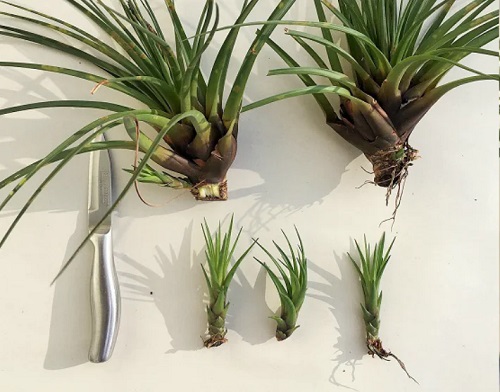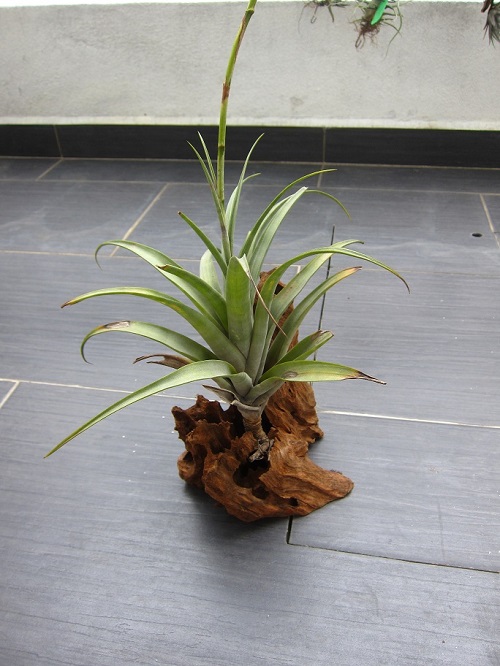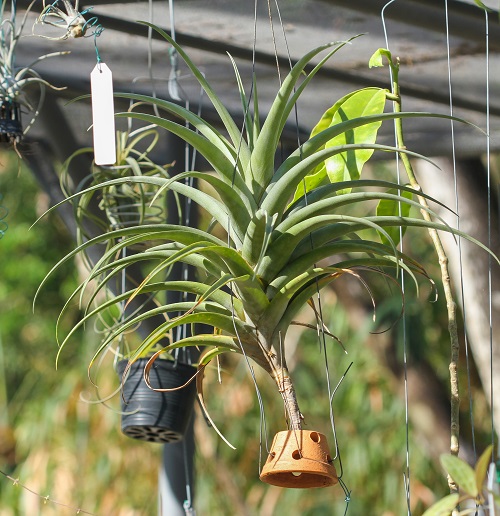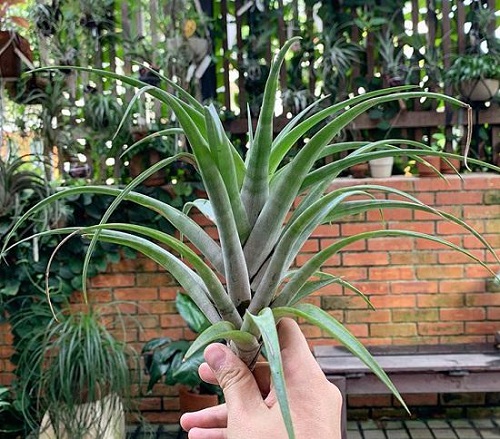Read this detailed post on Tillandsia Flexuosa Vivipara – Everything About it and How to Grow it in this comprehensive guide.
This variety stands out with its distinctive charm. This air plant, known for its resilient nature and fascinating appearance, has captured the attention of gardening enthusiasts. In this guide, we will delve into the essential aspects of Tillandsia Flexuosa Vivipara and Everything About Growing it.
Its unique curling form and straightforward propagation technique make it a perfect choice for beginners and experienced plant enthusiasts.
- Botanical Name: Tillandsia Flexuosa vivipara
- Popular as- Curly Slim, Viviparous Bendy Air Plant
- Prefers bright, indirect light
- Ideal temperature range between 50°F to 90°F (10°C to 32°C)
- Non-toxic to humans and pets
Check Out The Best Jellyfish Air Plant Care Guide Here
What is Tillandsia Flexuosa vivipara Plant
Tillandsia Flexuosa vivipara is a captivating air plant that belongs to the Tillandsia genus, a part of the Bromeliad family. Its unique charm lies in its intriguing physical attributes. This air plant showcases a gracefully curling form, characterized by slender leaves with vibrant green coloration. The plant’s size varies, with mature specimens typically reaching around 6 to 8 inches in height. Its ability to flourish without soil adds a touch of natural elegance to any space it graces.
Tillandsia Flexuosa vivipara Propagation

Tillandsia Flexuosa propagation techniques:
1. Offset division
2. Seed propagation.
Easiest method: Offset division
Propagating this plant through offset division is a straightforward process that allows you to expand your collection of these charming air plants. Follow these steps for successful propagation:
- Choose a healthy mature Tillandsia Flexuosa vivipara as the parent plant.
- Ensure it has produced offsets or “pups” at least one-third the parent’s size.
- Carefully grasp the base of the offset and gently wiggle it to separate it from the parent plant. Ensure that the offset has some roots attached.
- Place the separated offset in a dry, shaded location for a day or two.
- Once the offset has calloused, position it in a suitable location.
- Unlike some plants, it doesn’t require soil. Simply place the offset on a well-ventilated surface.
- Place the newly planted offset in an area with bright, indirect light. Avoid direct sunlight, as it can lead to scorching.
- Mist the offset every few days to maintain a humid environment.
- Over time, the offset will develop its root system, anchoring itself securely.
Find Out What Does a Healthy Air Plant Look Like
Tillandsia Flexuosa vivipara Flower

The exquisite flowering of Tillandsia Flexuosa adds an enchanting dimension to its appeal. The plant typically blooms during its maturity, producing a vibrant flower spike that emerges from the center. The flowers themselves are a sight to behold, showcasing shades of red, purple, or pink, which contrast beautifully with the plant’s green foliage. The blooming season generally occurs in the warmer months, from spring to early summer, and the flowers can last for several weeks, filling the air with a delicate fragrance.
How to Display Tillandsia Flexuosa vivipara
1. Hanging Planters
To highlight its distinctive shape, suspend Tillandsia Flexuosa vivipara in elegant glass or macramé hanging planters.
2. Terrariums
Create captivating terrariums with various textures and colors, providing an ideal microclimate for the air plant.
3. Driftwood Arrangements
Attach it to pieces of driftwood to evoke a natural, rustic charm.
4. Mounted on Walls
Secure the air plant on decorative panels or frames, transforming it into living wall art.
5. Tabletop Centerpieces
Incorporate Tillandsia Flexuosa vivipara into tabletop displays alongside other plants or decorative elements.
6. Wire Sculptures
Attach the air plant to intricate wire sculptures for a whimsical and artistic presentation.
Tillandsia Flexuosa vivipara Plant Care

Position
Select a location that provides bright, filtered light. While Tillandsia Flexuosa vivipara can tolerate some direct sunlight, it’s best to shield it from intense rays to prevent leaf scorching. An east or west-facing window is ideal for this plant
Airflow
Adequate air circulation is paramount for air plants like Tillandsia Flexuosa vivipara. Position them in spaces with good ventilation, as stagnant air can lead to moisture buildup and potential rot. Gentle breezes simulate their natural habitat and promote healthier growth.
Water
Mist your plant 2-3 times a week, ensuring the entire plant is lightly coated with water droplets. Alternatively, thoroughly soak the plant by submerging it in room-temperature water for 30 minutes. Afterward, gently shake off excess water to prevent pooling, which can encourage rot.
Temperature and Humidity
This air plant thrives within a temperature range of 50°F to 90°F (10°C to 32°C). Protect it from extreme temperature fluctuations and cold drafts, which can stress the plant.
Native to humid environments, Tillandsia Flexuosa vivipara benefits from adequate moisture levels. If you live in a dry climate, increase humidity by misting the plant more frequently or placing it near a humidifier.
Pests and Diseases
Regularly inspect your Tillandsia for signs of pests, such as aphids, mealybugs, or spider mites.
If you notice any unwanted visitors, gently remove them using a soft brush or a stream of water. For more severe infestations, use a diluted soapy water solution.
Check Out the Air Plant Care Guide Here
How to Fertilize Tillandsia Flexuosa vivipara
These plants derive nutrients from the air and water, making their feeding requirements unique. Once a month, incorporate a balanced, water-soluble orchid or air plant fertilizer into the water you use for soaking or misting. Follow the recommended dosage on the fertilizer label.
Frequently Asked Questions
1. How often should I water Tillandsia Flexuosa vivipara?
Mist your air plant 2-3 times a week, or soak it for 30 minutes every 1-2 weeks. Adjust the frequency based on humidity levels.
2. Are air plants suitable for beginners?
Yes, air plants are generally low-maintenance and great for beginners. Its resilience makes this plant a good choice.
3. Why are the tips of my plant’s leaves turning brown?
Browning leaf tips might indicate dryness or insufficient water absorption. Ensure thorough misting or soaking to combat this issue.
Check Out Tillandsia Zecheri Information and Growing Guide Here



Great content! Super high-quality! Keep it up! 🙂